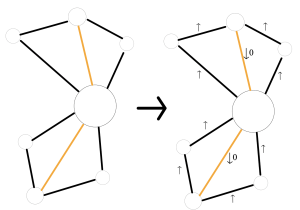Boston MBTA Orange Line Closure & Network Traffic
A major event that is connected to our class topics is Boston’s MBTA line closures. Currently, all of the Orange line is out of service and a significant part of the Green line is out as well. These closures will last for approximately a month, of which half of that time period has already passed. Approximately 100,000 people use the orange line every day. These passengers still need to get around the city, so roadway traffic should increase as a result. Our topics of network traffic can observe how a route closure affects the whole network.
Assuming the number of people in the network do not change, we can observe that people will use the other routes. An important item to note is that not everyone will take one route in its place. According to the Nash Equilibrium, people will not deviate from their position if it is the most optimal option. In theory, the drivers would distribute themselves to different routes and be on the fastest route to their destination. While stress to the network can be minimized based on this behavior, there should still be added delays due to the route closure.
While the route closures demonstrate the current importance of the MBTA in the Boston transportation network, perhaps this can also illustrate how an improvement of the Orange line can improve traffic on other routes and generally how public transportation can benefit cities. If a greater volume of passengers use the orange line, less people will use other routes. This can increase the speed on other networks and thus improve vehicle throughput and citizens’ quality of life. In cities that have issues with roadway congestion, public transit can be a viable option to improve their overall transportation network.
Source: https://www.nbcboston.com/news/local/orange-line-shutdown-traffic-map/2808443/

